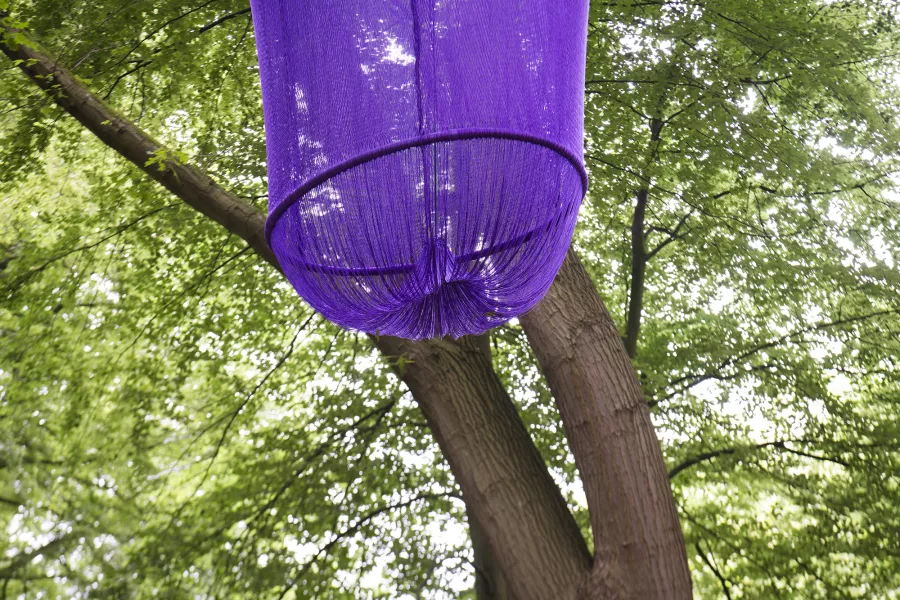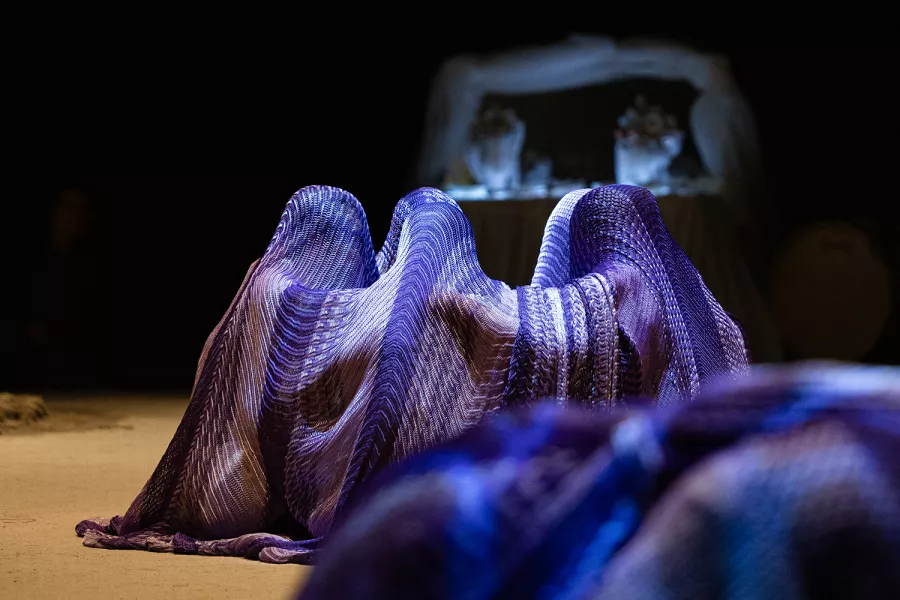
Amanda Piña — Photo © Patrick Van Vlerken (RHoK)
On display at COME CLOSER
To Bloom () Florecimiento, 2024
Choreographer Amanda Piña and an ensemble of artists from the Americas, Europe and Africa create an intriguing installative performance as an homage to the ocean. Based on the movements of ancient underwater species, such as sponges, cnidaria (jellyfish), mollusks, and echinoderms. The performative installation connects these with the historical and contemporary movements of ocean currents and migrations. By intertwining the micro and macro movements, the cosmic and the political the ocean appears as a confluence of flow and decay, but also as a vibrant vital realm that sustains our life.

Amanda Piña, To Bloom () Florecimiento (detail), 2024 © The Artist - Photo: Léonard Pongo
To Bloom () Florecimiento, 2024
This installation is based on the movements of ancient animal species such as corals, anemone, sea urchins and sponges, that live under water and whose bodies resemble flowers. Amanda Piña connects them to the constant movements of ocean currents and human migration in order to bring forth another and embodied understanding of water ecologies and the origins of climate change, deeply connected with transatlantic slave trade. The sculpture, activated during performances, invites you to think about being part of a web of invisible and visible relations.

Amanda Piña, To Bloom () Florecimiento (detail), 2024 © The Artist - Photo: Léonard Pongo
To Bloom () Florecimiento, 2024
Amanda Piña presents a sculpture made in the ancient tradition of Mayan hammock weaving, alive today in the Yucatan peninsula. The structure made of Rottan canes re-significates the relation that material has with the disciplination of the enslaved bodies during the slave trade. The hammock weaving textile, manufactured collectively, reminds us of indigenous forms of resistance to projected temporalities, to rest and to contemplate.
- Continuous viewing
- Please do not touch
